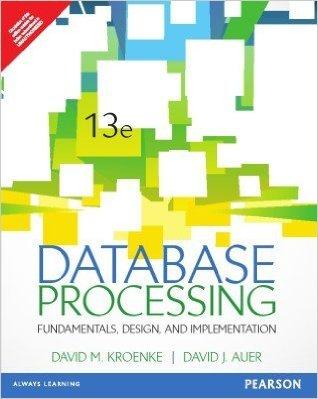Please answer ALL questions, thank you!


1.) A.) Choose a commercially available waveguide to operate at 4.8 GHz. Make sure the operating frequency is approximately centered in the recommended operating frequency range. See attached table. B.) Determine the cutoff frequency of the fundamental mode in the guide. C.) Determine the fundamental mode waveguide phase constant at the operating frequency. D.) Determine the guide wavelength at the operating frequency. E.) Determine the guide phase velocity at the operating frequency. F.) Determine the guide energy velocity (group velocity) at the operating frequency. G.) Determine the waveguide impedance at the operating frequency. H.) Determine, at the operating frequency, the peak electric field strength in the guide (in kv/cm) assuming 1.7 MW of power is being transmitted down the guide. 1.) Under the conditions of Part H.) Does the electric field in the guide exceed the breakdown strength of air (29 kV/cm)? J.) Determine, at the operating frequency, at least one position in the guide where the magnetic field is circularly polarized. (Hint: Circular polarization requires equal amplitude orthogonal components of magnetic field that are 90 degrees out of phase.) K.) Determine the attenuation in dB per meter, at the operating frequency, of the next higher order mode in the waveguide. L.) Determine, at the operating frequency, the attenuation due to conductor loss in dB per 100 ft. assuming the guide is air-filled and made of aluminum. M.) Repeat part L.) if the guide is filled with Teflon, e, 2.6 Microwave Waveguides ABLE 4.1. Salient features of some commercially available rectangular waveguides. Inside Dimensions (Inches) Theoretical Recommended Frequency Rang Frequency for TE Mode Lowest to Highest Frequency Mw esignation Tolerance WR 2. 23.000-11.500 .020 21.000-10.500.020 18.000-9.000 15.000-7.500 0.32-0.49 0.35-0.53 0.41-0.625 0.49-0.75 153.0-212.0 120.0-173.0 93.4-131.9 67.6-93.3 35.0-53.8 27.0-38.5 17.2-24.1 11.9-17.2 11.500-5.750 9.750-4.875 7.700-3.850 6.500-3.250 0.75-1.12 0.96-1.45 1.12-1.70 50 5.100-2.550 4.300-2.150 3.400-1.700 2.840-1.340 1.45-2.20 1,70-2.60 2.20-3.30 2.60-3.95 10 3.30-4.90 3.95-5.85 2.290-1.145 1.872-0.872 1.590-0.795 1.372-0.622 5.85-8.20 0.56-0.71 7.05-10.00 8.20-12,40 0.35-0.46 0.20-0.29 1.122-0.497 0.900-0.400 0.750-0.375 0.622-0.311 90 10.00-15.00 12.40-18.00 0.12-0.16 0.510-0.255 0.420-0.170 0.340-0.170 0.280-0.140 15.00-22.00 18.00-26.50 22.00-33.00 26.50-40.00 0.080-0.107 0.043-0.058 0.034-0.048 0.022-0.031 0.224-0.112 0.188-0.094 0.148-0.074 0.122-0.061 33.00-50.00 40.00-60.00 50.00-75.00 60.00-90.00 0.014-0.020 0.011-0.015 0.0063-0.0090 0.0042-0.0060 31.357 863 0.100-0.050 0.080-0.040 75.00-110.00 0.0030-0.0041 90.00-140.00 0.0018-0.0026 10 70:065-0.0325.00025 90.840 110.00-170.00 0.0012-0.0017 0.051-0.0255 .0002 0.043-0.02150002 0.034-0.01700002 40.00-220.00 0.00071-0.00107 137.520 173.280 170.00-260.00 0.00052-0.00075 220.00-325.00 0.00035-0.00047 1.) A.) Choose a commercially available waveguide to operate at 4.8 GHz. Make sure the operating frequency is approximately centered in the recommended operating frequency range. See attached table. B.) Determine the cutoff frequency of the fundamental mode in the guide. C.) Determine the fundamental mode waveguide phase constant at the operating frequency. D.) Determine the guide wavelength at the operating frequency. E.) Determine the guide phase velocity at the operating frequency. F.) Determine the guide energy velocity (group velocity) at the operating frequency. G.) Determine the waveguide impedance at the operating frequency. H.) Determine, at the operating frequency, the peak electric field strength in the guide (in kv/cm) assuming 1.7 MW of power is being transmitted down the guide. 1.) Under the conditions of Part H.) Does the electric field in the guide exceed the breakdown strength of air (29 kV/cm)? J.) Determine, at the operating frequency, at least one position in the guide where the magnetic field is circularly polarized. (Hint: Circular polarization requires equal amplitude orthogonal components of magnetic field that are 90 degrees out of phase.) K.) Determine the attenuation in dB per meter, at the operating frequency, of the next higher order mode in the waveguide. L.) Determine, at the operating frequency, the attenuation due to conductor loss in dB per 100 ft. assuming the guide is air-filled and made of aluminum. M.) Repeat part L.) if the guide is filled with Teflon, e, 2.6 Microwave Waveguides ABLE 4.1. Salient features of some commercially available rectangular waveguides. Inside Dimensions (Inches) Theoretical Recommended Frequency Rang Frequency for TE Mode Lowest to Highest Frequency Mw esignation Tolerance WR 2. 23.000-11.500 .020 21.000-10.500.020 18.000-9.000 15.000-7.500 0.32-0.49 0.35-0.53 0.41-0.625 0.49-0.75 153.0-212.0 120.0-173.0 93.4-131.9 67.6-93.3 35.0-53.8 27.0-38.5 17.2-24.1 11.9-17.2 11.500-5.750 9.750-4.875 7.700-3.850 6.500-3.250 0.75-1.12 0.96-1.45 1.12-1.70 50 5.100-2.550 4.300-2.150 3.400-1.700 2.840-1.340 1.45-2.20 1,70-2.60 2.20-3.30 2.60-3.95 10 3.30-4.90 3.95-5.85 2.290-1.145 1.872-0.872 1.590-0.795 1.372-0.622 5.85-8.20 0.56-0.71 7.05-10.00 8.20-12,40 0.35-0.46 0.20-0.29 1.122-0.497 0.900-0.400 0.750-0.375 0.622-0.311 90 10.00-15.00 12.40-18.00 0.12-0.16 0.510-0.255 0.420-0.170 0.340-0.170 0.280-0.140 15.00-22.00 18.00-26.50 22.00-33.00 26.50-40.00 0.080-0.107 0.043-0.058 0.034-0.048 0.022-0.031 0.224-0.112 0.188-0.094 0.148-0.074 0.122-0.061 33.00-50.00 40.00-60.00 50.00-75.00 60.00-90.00 0.014-0.020 0.011-0.015 0.0063-0.0090 0.0042-0.0060 31.357 863 0.100-0.050 0.080-0.040 75.00-110.00 0.0030-0.0041 90.00-140.00 0.0018-0.0026 10 70:065-0.0325.00025 90.840 110.00-170.00 0.0012-0.0017 0.051-0.0255 .0002 0.043-0.02150002 0.034-0.01700002 40.00-220.00 0.00071-0.00107 137.520 173.280 170.00-260.00 0.00052-0.00075 220.00-325.00 0.00035-0.00047








